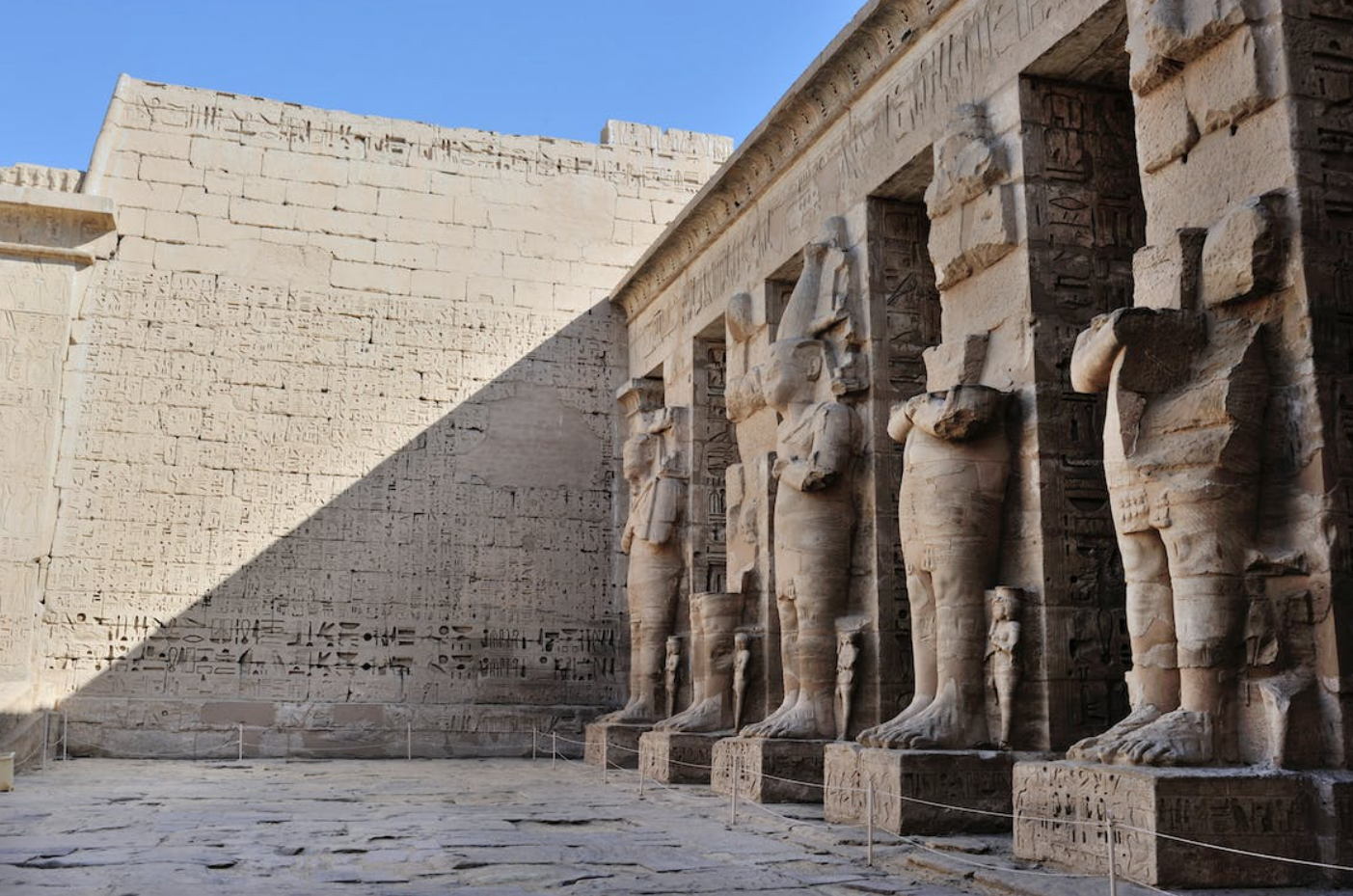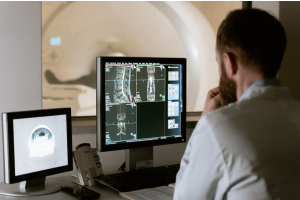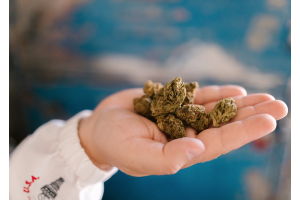The History of Medical Marijuana

The idea of marijuana as an illicit substance is a relatively new concept in concern with most human civilization.
It wasn't until the 1930s that cannabis was banned, thanks to the Marihuana Tax Act in 1937.¹This tax act was largely based on racist implications; in every regard, it holds no legitimacy to cannabis and its potential benefits. Yet, it became the foundation for how our modern world views the substance and erased millennia of history revolving around medical marijuana.
Throughout an expansion of different cultures from various timeframes, cannabis is medicine and is used in a number of spiritual practices. Throughout this article, we will take a deeper look at how history shaped this plant and what properties other civilizations have used it for.
Ancient China
The earliest written records that discuss medical marijuana date back to 1500 BC, but it's believed to have been used as early as 2700 BC by Chinese Emperor Shen Nung, considered by many to be the Father of Chinese medicine.²According to Chinese legend, the emperor discovered the healing properties of medical marijuana and the herbs ginseng and ephedra.Even more so, Chinese Emperor Fu Hsi, whom many accredit for bringing civilization to China, had referred to "Ma," the Chinese word for cannabis, around 2900 BC.
Still, we can go further back as the use of hemp as a material dates back to nearly 10,000 years ago in what's now modern-day Taiwan. While there are no records of hemp being used for medicinal practice, we do know ancient humans consumed hemp seeds as food. Therefore, it's very likely they discovered its medicinal properties.³
These properties vary depending on the era, but cannabis was largely used for menstrual disorders, in wounds, to help stimulate the nervous system, and to help with other internal fluxes, such as constipation and obstinate vomiting. Unfortunately, there aren't too many records concerning cannabis and how exactly it was used in Ancient China.
The most comprehensive record came from the Shennong Bencaojing, the oldest Chinese pharmacopeia circulated in 100 AD.Within that, you'll find the following:4"The flowers when they burst [when the pollen is scattered] are called [mafen] or [mabo]. The best time for gathering is the seventh day of the seventh month. The seeds are gathered in the ninth month.
The seeds which have entered the soil are injurious to man. It grows in [Taishan]. The flowers, the fruit [seed], and the leaves are officinal. The leaves and the fruit are said to be poisonous, but not the flowers and the kernels of the seeds."With more knowledge being recorded, cannabis began finding other medicinal uses. For example, Hua Tuo (140 AD - 208 AD) was the first Chinese surgeon to use the plant as an anesthetic.5
Ancient Egypt
Another early recording of cannabis use comes from 1550 BC, the Ebers Papyrus.
This is the oldest surviving textbook in existence and, in turn, the oldest confirmed piece of information on medical marijuana.6According to the papyrus, medical marijuana was used for thousands of years to treat the sick. And while what remains of this text doesn't go into too much detail, we do have some information concerning ancient Egypt throughout the years that followed.
These can be observed in the Ramesseum III Papyrus (1700 BC), the Berlin Papyrus (1300 BC), and the Chester Beatty Medical Papyrus (1300 BC). All discuss using medical marijuana primarily as a prescription for inflammation.
Most interestingly, hemp was used as a suppository to relieve the pain of hemorrhoids.7Furthermore, cannabis pollen was found on the mummy of Ramesses II, who died in 1213 BC. More particularly, it was used as a cotton fabric on the mummy. This discovery led to the finding that cannabis may have been introduced to Ancient Egypt as there are no indications of it being native to the land.

Ancient India
Around 1000 BC, cannabis made its way into India through the drink Bhang, a mixture of cannabis and milk. According to ancient texts, it was used as an anesthetic and an anti-phlegmatic.9 Since Indians recognized cannabis's psychoactive properties, one Indian philosopher believed that they would combine religious practices with medicinal."Cannabis was used in India in very early medical applications," Jonathon Green notes in his book Cannabis. "People believed it could quicken the mind, prolong life, improve judgment, lower fevers, induce sleep, and cure dysentery... The first major work to lay out the uses of cannabis in medicine was the Ayurvedic [a system of Indian medicine] treatise of Sushruta Samhita written in 600 BC... Within the Sushrita, cannabis is cited as an anti-phlegmatic and a cure for leprosy."
Ancient Greece
The use of cannabis in ancient Greece is unique compared to previous civilizations. By 500 BC, Scythians were said to use cannabis in steam baths, driving them into a frenzied state. ¹¹However, Greeks would use it both on animals and humans when it came to medicine.
For example, they'd use cannabis on the wounds and sores of their horses to relieve pain and further recovery. In humans, cannabis leaves were used for nose bleeds. Whereas cannabis used was found to expel tapeworms. Cannabis seeds were also steeped in water or wine and later used to treat pain and inflammation, usually for earaches.

Jesus Christand Cannabis
Some scholars have argued that Jesus Christ used cannabis in anointing oil. The evidence comes from the Bible, where Jesus is said to have anointed his disciples with a "potent entheogenic [psychoactive substance oil], sending out the 12 apostles to do the same [around the year 30 AD]."¹²This argument has been taken further in the sense that when Jesus used cannabis oil, he induced his spiritual visions.
The ancient recipe for this oil included large amounts of cannabis flower, as recorded in Exodus. This oil was then commonly used in religious ceremonies where priests and prophets had an easier time speaking the word of Yahweh.¹³
Modern History
While there's evidence of medieval Islamics using cannabis as medication from the 8th to 18th centuries, it didn't find much popularity until the mid-19th century.14Cannabis seeds had become a secret ingredient used in many patent medicines at the time, with over 2000 of these medicines hitting store shelves from 280 manufacturers.
However, this didn't last too long as the syringe and new medications, such as aspirin, began to alleviate symptoms cannabis wasn't as effective towards.16 Still, it continued to be used as a therapeutic medicine, particularly for general pain, muscle spasms, and stomach cramps.But by 1937, cannabis was made illegal in the United States, which soon followed in most Western countries. By 1970, cannabis was listed as a Schedule I substance, which has no medical value.
The Abrupt End to Cannabis Use as Medicine
Before written documents, a late Neolithic grave found near Hattemerbroek, Gelderland (2459 - 2203 BC), reveals the earliest known evidence of cannabis use.
Within the grave was highly concentrated pollen. After five years of investigation, it was determined to be mostly cannabis, with some meadowsweet.17Since meadowsweet has fever-reducing properties, archeologists theorize the person in the grave was ill with something and used this cannabis concentration as a painkiller.
This means that for over 2,000 years, cannabis was used among various cultures for various medicinal values. Yet, within the short span of a decade, views on the substance completely changed. Leaving much of the stigma and legality issues, we continue to fight against today.Our perspectives have been skewed on a remedy that found both medicinal and religious value. This skew has inhibited science and led to entire generations demonizing a plant that had helped our ancestors.
By understanding the history of medicinal cannabis, we can begin to picture how short-sighted our present view of the plant is. And with that picture, we can make the efforts necessary to move forward and give marijuana the spotlight it deserves.
Reference Sources
1 U.S. Customs and Border Protection: Did You Know... Marijuana Was Once a Legal Cross-Border Import? https://www.cbp.gov/about/history/did-you-know/marijuana
2 ProCon.org: Historical Timeline: History of Marijuana as Medicine - 2900 BC to Present: https://medicalmarijuana.procon.org/historical-timeline/#2016-present
3 Li, Hui-Lin (1974). "An Archaeological and Historical Account of Cannabis in China", Economic Botany
4 Bretschneider, Emil (1895). Botanicon Sinicum: Notes on Chinese Botany from Native and Western Sources. Part III, Botanical Investigations in the Materia Medica of the Ancient Chinese. Kelly & Walsh. p. 378
5 de Crespigny, Rafe (2007). A Biographical Dictionary of Later Han to the Three Kingdoms (23–220 AD). Leiden: Brill Publishers. p. 332. ISBN 978-90-04-15605-0. OCLC 71779118
6 Online Pot: The Ebers Papyrus The Oldest Medical Text Book Egyptian Medical Writing About Marihuana. http://www.onlinepot.org/the-ebers-papyrus-the-oldest-written-prescriptions-for-medical-marihuana-era-1550-bc/
7 Pain, Stephanie (15 December 2007). "The Pharaoh's pharmacists". New Scientist. Reed Business Information Ltd: https://www.newscientist.com/article/mg19626341-600-the-pharaohs-pharmacists/
8 Drug Timeline CA: Cannabis pollen is found on the mummy of Ramesses II, who died in 1213 BCE: https://drugtimeline.ca/event/cannabis-pollen-found-mummy-ramesses-ii-who-died-1/
9 Culture Trip: Bhang, A Story Of Divine Intoxication: https://theculturetrip.com/asia/india/articles/bhang-a-story-of-divine-intoxication/
10 Green, Jonathon (2002). Cannabis. DIANE Publishing Company.
11 Butrica, James L. (2002). "The Medical Use of Cannabis Among the Greeks and Romans". Journal of Cannabis Therapeutics.
12 Bennett, Chris (2003). “Was Jesus a Stoner?” High Times Magazine. https://archive.hightimes.com/article/2003/2/1/was-jesus-a-stoner
13 Ruck PhD, Carl (2003). “Did Jesus Use Cannabis?” The Sunday Times.
14 Lozano, Indalecio (2001). "The Therapeutic Use of Cannabis sativa (L.) in Arabic Medicine". Journal of Cannabis Therapeutics. https://www.tandfonline.com/doi/abs/10.1300/J175v01n01_05
15 The Antique Cannabis Book. antiquecannabisbook.com (16 March 2012). http://antiquecannabisbook.com/
16 "History of Cannabis". BBC News. 2 November 2001. http://news.bbc.co.uk/1/hi/programmes/panorama/1632726.stm
17 Cannabis van 4200 jaar oud in graf Hanzelijn (Dutch):
http://www.nu.nl/wetenschap/2784173/cannabis-van-4200-jaar-oud-in-graf-hanzelijn.html
Written and Published by Paul James in Weed World Magazine issue 158
Featured Image: Pexels












Validate your login